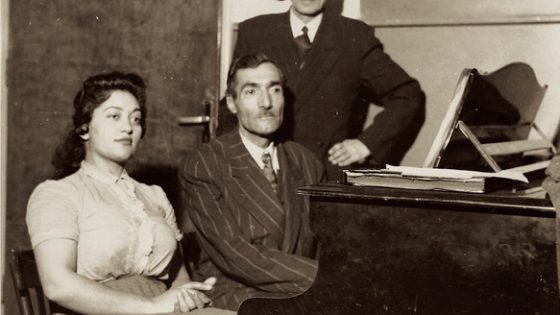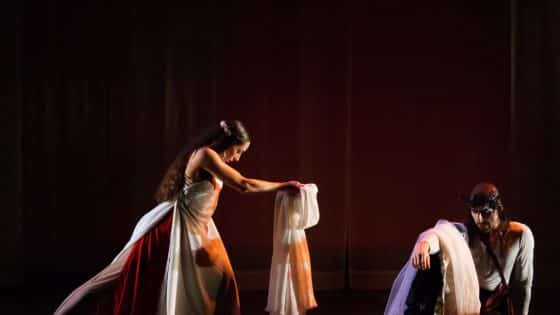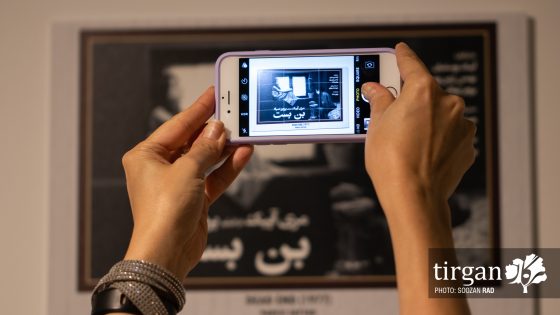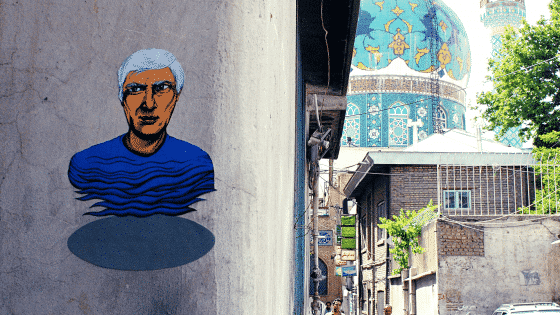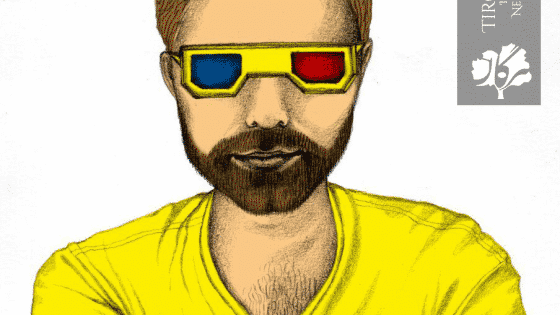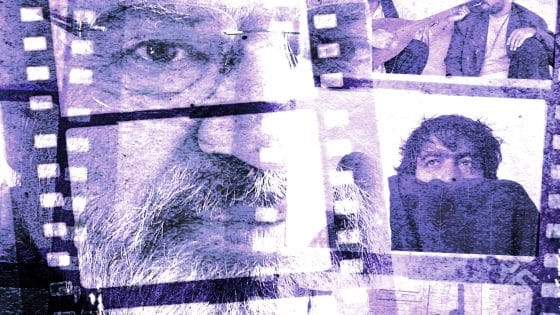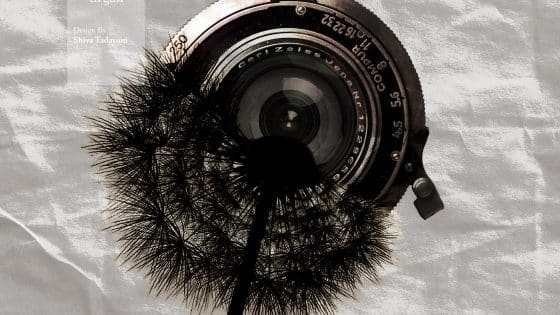As a scholar, educator, translator, playwright, theatre director, and auteur filmmaker Bahram Bayzaie has a unique status in Iran’s contemporary culture. Bayzaie was born in 1939 in Tehran in a cultured family; hence was introduced to Persian poetry and traditional visual arts early in his childhood. Bayzaie was accepted in the Faculty of Literature at the University of Tehran but soon left school in order to pursue his writing, scholarship and production of visual arts. In 1962, in his early twenties, he had already published a number of film scripts, plays, scholarly articles and made a low budget 8mm short film. Bayzaie was appointed as a professor of fine arts at The University of Tehran in 1973 and is currently a visiting professor of Iranian Studies at Stanford University. He was also a key speaker in a notable cultural event in Iranian history that was later known as the “Ten Nights at Goethe Institute” in 1978. Bahram Bayzaie is one of the most significant cultural figures of Iran whose visual productions and scholarship have influenced Iranian arts and culture for more than half a century. Here is a brief summary of his impact on Iranian culture and visual arts:
- Innovative Scholarship, Groundbreaking Artistic Productions
Internationally, Bayzaie is known as the auteur film maker of memorable films such as Bashu: The Little Stanger (1989) and Killing Mad Dogs (2001) but the span of his artistic works and the impact of his prolific career are far greater. Bayzaie’s scholarship and artistic work revived Iran’s performing arts in the 1960s and onward, introduced new aesthetic forms to the theatrical and cinematic arenas, deconstructed the imagined gender relations of the past artistic productions, and reconciled Iran’s rich mythology and its opulent conventional performing arts with new dramatic approaches of modern theatre and cinema.
Bayzai is bequeathed the title of Ostador Master, a title rarely given to cultural figures in the Iranian intelligentsia for his innovative scholarship on the conventions of Eastern and Iranian visual arts, along with his unrivaled theatrical and cinematic productions, which are popular and intellectually stimulating. OstadBayzai has written around 50 plays and hekayats/narratives, 53 film scripts, 60 articles, 6 scholarly books, and has directed 14 films over the last fifty years of his life.
Among OstadBayzai’s scholarly works Theatre in Iran(1965) stands out as a comprehensive research on Iranian theatrical forms before and after Islam. The roots of Iranian theatrical genres such as Naqali(Narration Drama), Puppetry, Tazieh(Passion Plays) and Comedy are meticulously studied in this book by providing historical evidences. Where is HizarAfsan/Thousand Legends?(2006) is another significant scholarly work on The Thousand and One Nightsbased on his original research on Pahlavi and early Persian texts, as well as post-Islamic historical sources. Where is HizarAfsanreveals the Iranian origins of The Thousandof One Nights and presents its connection with other significant literary works of Persia such as Ferdowsi’s Shahnameh(Book of Kings). Bayzaie has conducted research on global performing arts such as Japanese and Indian theater and cinema.
On stage, Bayzaie has revived forgotten theatrical genres, including Saye-Baazi(Shadow Playing), with seven hundred years of history. JanaaandBalaa-Dour(2012), is a modernized shadow play with male and female narrators and one of Bayzaie’s latest stage productions at Stanford University. Bayzaie also refashioned and rehearsed traditional dramatic forms such as puppetry, ta’zieh, and comical genres such as Rou Howzi/TarabNameh.
[cta id=”3869″ vid=”0″]
- Bayzaieand New Wave Cinema
In the second half of the 1960s and the 1970s, Bahram Bayzaie was one of the seminal auteurs of Iranian New Wave cinema, a movement that enriched the national film industry and brought international gravity to Iranian cinema. Bayzaie’s first feature film Downpour (1971) is an example of New Wave cinema that created novel thematics and characterization in reaction to the filmfarsi/Trash Movie sensibilities. The lead figure, Mr. Hekmati (played by Parviz Fanizadeh) in Dowmpouris a dull, unheroic teacher and a lone outsider, who loses his love interest to a well-known tough guy in the neighborhood. Self /other, outsider/insider are recurrent themes in Bayzaie’s films such as, Downpour, The Stranger and the Fog (1976),Tara’s Ballade(1979),and Bashu: The Little Stranger(1989).Bayzai has bemused audiences with astonishing stories about misplaced and disoriented characters who are striving to find a place of belonging; Young men who are trying to change their environment or common beliefs, courageous women who fight against the established conventions, homeless children, who are estranged in their homeland.
In fact, one of the most striking aspects of Bayzaie’s oeuvre is his unprecedented concentration on the individual/subject instead of society as the decisive element in determining social and cultural transforms. His meticulous examination of the notions of change, individuality, and the questioning of traditions and official history could be traced in films such as The Crow (1976), Killing Mad Dogs, and plays such as Afraa: Or The Day is Passing (2002), The Death of Yazdgerd(1999), and Reading Siyavash(2002). Bayzai’s approach in all of his works, regardless of their historical or modern setting is essentially modernist with philosophical and humanistic concerns.
- Bayzaie, Mythology and the Re-mythologizing of GenderRelations
The remarkable body of theatrical work that Bayzai has written and directed is a testimony to his wealth of knowledge on mythology and history of Iran and the East. When he was only twenty years of age, he finished writing the first draft of a narrative titled Arash. The narrative is based on the story of Arash the Archer, a mythological figure, who was mentioned in the primary collection of religious texts of Zoroastrianism, Avesta, as well as Shahnameh. The mythological language and stylistics also informed Bayzai’s cinematic works such as Ballade of Tara.
While Bayzaie’s aesthetics is heavily codified by Iranian and Eastern mythologies, the characters refashion and sometimes de-mythologize the extant myths. Notions of masculinity and femininity that were stereotypically portrayed in previous Iranian films (both in commercial and art-house productions), are examined and redefined in The Stranger and the Fogfor the first time. Unlike the insignificant women in films such as Qeysar(Masud Kimiai, 1969) and The Cow(Daryoush Mehrjui, 1968), Ra’na in The Stranger and the Fogis a powerful figure who is able to decide her destiny and faces equal opportunities of domination and subjection. The foregrounding of women becomes a new tradition in his later films. Female figures such as Kiyan in Perhaps Some Other Time(1988), Asyih in The Crow, and Na’i in Bashu: The Little Strangerare “free spirits” who challenge the collective social norms. As the new mythical figures, they seek their roots in their past and, simultaneously, signify the emergence of new ideas in their society. Bayzaie’s philosophical insight portrays his characters’ confrontation with modernity. They are searching for a new identity inspired by their background to fit into the modern definitions of the new era. The leading characters in most of Bayzaie’s films are graceful but dominating female figures. In the process of recovering memory and through recurring themes of time and space, films such as Perhaps Some Other Timeinvite the viewer to participate in remembering and reconsidering history.
As implied before, the de-conventionalizing of gender representation, which started in Thunder Shower, is taken further in Bayzai’s later films. The Stranger and the Fog established a new gendered discourse in Iranian cinema, but it is in The Ballad of Tarathat gender identity and power are completely switched. Iranian film culture is here completely transformed in the portrayal of Tara as a mythic woman who is the sole fighter in the battle of life. The powerful performance of Susan Taslimi as Tara, in a primitive setting, symbolizes the power of nature, love, fertility and pleasure. Nevertheless, Tara represents more than a mere force of nature. She is a multidimensional human being who is capable of working, thinking and making choices on her own terms. Unlike the common practice in many Iranian films in the 1960s and 1970s, Bayzaie’s leading actors are not physically powerful figures. Parviz Fanni-zadih, for instance, a short, slim man with thick spectacles who was cast as the lead, does not represent conventional masculine attributes of vigour and sexual energy. Moreover, Bayzai’s use of normal-looking men (such as casting Hussein Parvaresh as Isalat in The Crow and Parviz Pur-Husseini as Na’i’s husband in Bashuthe Little Stranger (1989), in contrast to dazzling and powerful actresses such as Mojdeh Shamsai and Taslimi, de-conventionalized gender representation in Iranian cinema.
The moral power of women in Bayzaie’s works is not based on their sexuality. It is grounded in their work and their mystical/psychological journey of self-discovery and self-exploration, which make them strangers to their surroundings. Bayzaie’s films map out different relations of power and gender in his depiction of masculinity and femininity, gender dominance, subordination, and resistance. His filmic treatment of women re-historicizes relations between men and women by revealing a more liberated gender identity that does not match the gendered behaviour in Iran’s official history and mainstream cinema. He conveys a new re-mythologizing of the old.
From the late 1980s, many directors followed Bayzai in exploring the politics of sexual identity in cinema. Kim Longinotto and Ziba Mir-Hosseini’s Divorce Iranian Style(1998), Rakhshan Bani-Etemad’s The May Lady (1998), Samira Makhmalbaf’s The Apple (1998), Mohsen Makhmalbaf’s Gabbeh(1997) and Tahmineh Milani’s Two Women (1998), The Hidden Half, (2001) and The Fifth Reaction (2003) are a few examples of the refashioned gender representation in contemporary Iranian cinema.
The gender issues in Bayzaie’s films are filtered through his sophisticated language and through mythological and historical allusions. Furthermore, he does not merely explore gendered relations in a contemporary Iranian context, but at a more profound humanistic level, as a dialectic response to the canonized historical and cinematic discourses. The cultural space Bayzaie portrays is rather complex and is influenced by historical and mythological elements in a broader sense. The viewer can fully connect with these thematics if she or he is informed by Iran’s (in particular) and the East’s (in general) history, mythology and visual arts. Bayzaie’s films do not lend themselves to stereotypical readings of gender, ideology and religion. In this way his aesthetics diverge significantly from many other film directors.
This article originally appeared in the 2017 edition of Tirgan Magazine.
THE BIG SCREEN AT TIRGAN


